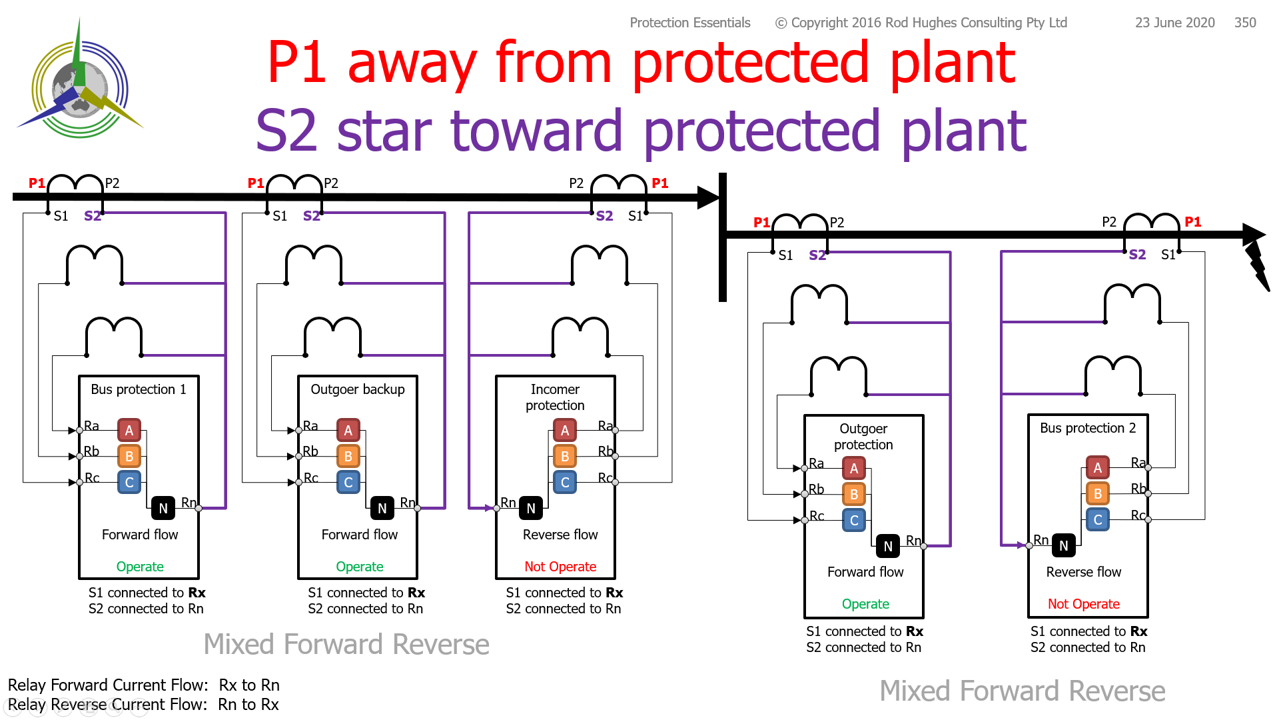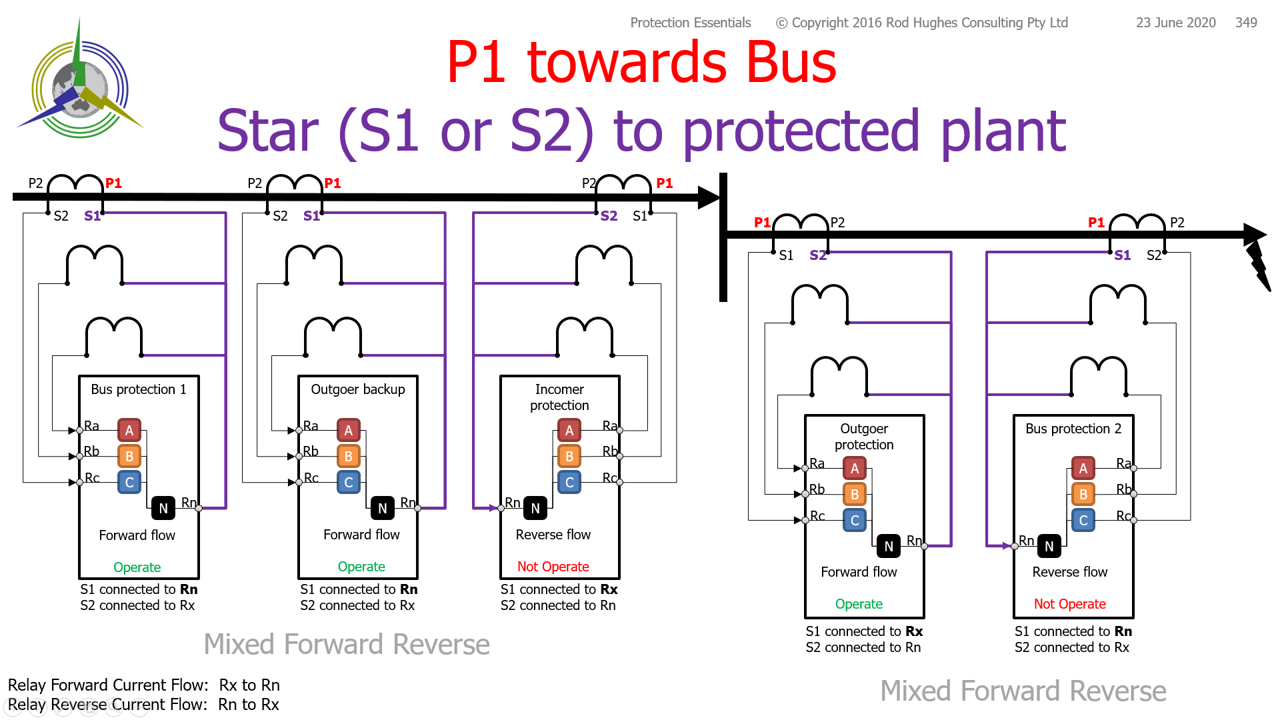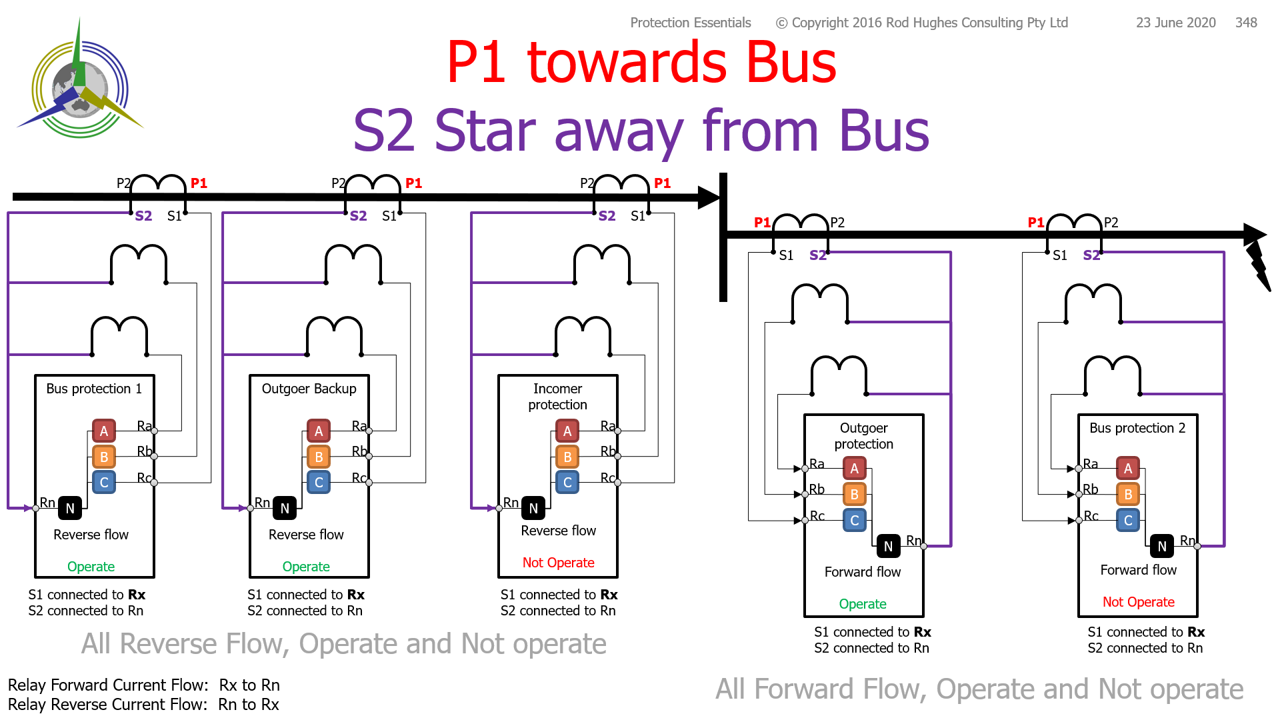The following diagrams show the effect of three different CT polarity and star side policies used by Australian utilities as applied to a incomer and outgoer of a busbar and a fault on the outgoer. These three policies are in use by different utilities across Australia. They are all "correct" i.e. they work!
i.e. all protections looking towards the fault will operate, whilst all protections looking to the left source will not operate .... provided you have set the correct operate direction for the relay. In some cases operate is for reverse power flow as far as the relay is concerned. However it is essential you know which policy is in use for the substation you are designing/visiting/testing. Please note the diagrams carefully .. the fault is on the right side so fault direction is left to right through the CT primaries. CT polarity marking means that current flowing into the P terminal causes current flowing out of the corresponding S terminal:
In on P1 gives out on S1
In on P2 gives out on S2 Normal "relay polarity" for operation is from the phase terminal to the neutral and is the assumption in these drawings.
Of course modern digital relays allow you to swap that direction by a setting in the relay. In the first diagram, note that on the left side of the busbar, all relays are seeing reverse current flow, i.e. in on Rn and out on Rx.
The relays "looking" to the right (Bus protection, Outgoer backup) should be attempting to operate and would therefore have to be set with "reverse direction for operation".
The relay "looking to the left (Incomer protection) should not operate, but since it is already seeing current flow in the reverse flow, it is set to "forward direction for operation". However on the right side of the busbar, both relays are seeing forward current flow i.e. in on Rx and out on Rn,
The outgoer protection looking to the right should be attempting to operate and would therefore have to be set with "forward direction for operation".
The bus protection looking to the left should not operate and would therefore have to be set with "reverse direction for operation". 
In the second diagram, on the left side of the busbar, the relays looking to the right (Bus protection, Outgoer backup) are seeing forward current flow, and would therefore have to be set with "forward direction for operation".
The Incomer protection is already seeing reverse current flow for a fault that it should not operate for and hence it should be set "forward direction for operation". On the right side of the busbar, the Outgoer relay is seeing forward current flow and hence it should be set "forward direction for operation".
The bus protection is seeing reverse current flow for the fault on the outgoer and hence it should also be set "forward direction for operation". 
The third diagram provides the same result as the second diagram: on the left side of the busbar, the relays looking to the right (Bus protection, Outgoer backup) are seeing forward current flow, and would therefore have to be set with "forward direction for operation".
The Incomer protection is already seeing reverse current flow for a fault that it should not operate for and hence it should be set "forward direction for operation". On the right side of the busbar, the Outgoer relay is seeing forward current flow and hence it should be set "forward direction for operation".
The bus protection is seeing reverse current flow for the fault on the outgoer and hence it should also be set "forward direction for operation". 
| Polarity | Star | Bus protection 1 | Outgoer back up | Incomer | Outgoer | Bus protection 2 |
|---|
| P1 towards Bus | S2 Star away from Bus | Reverse | Reverse | Forward | Forward | Reverse | | P1 towards Bus | Star (S1 or S2) to protected plant | Forward | Forward | Reverse | Forward | Reverse | | P1 away from protected plant | S2 star toward protected plant | Forward | Forward | Reverse | Forward | Reverse |
|